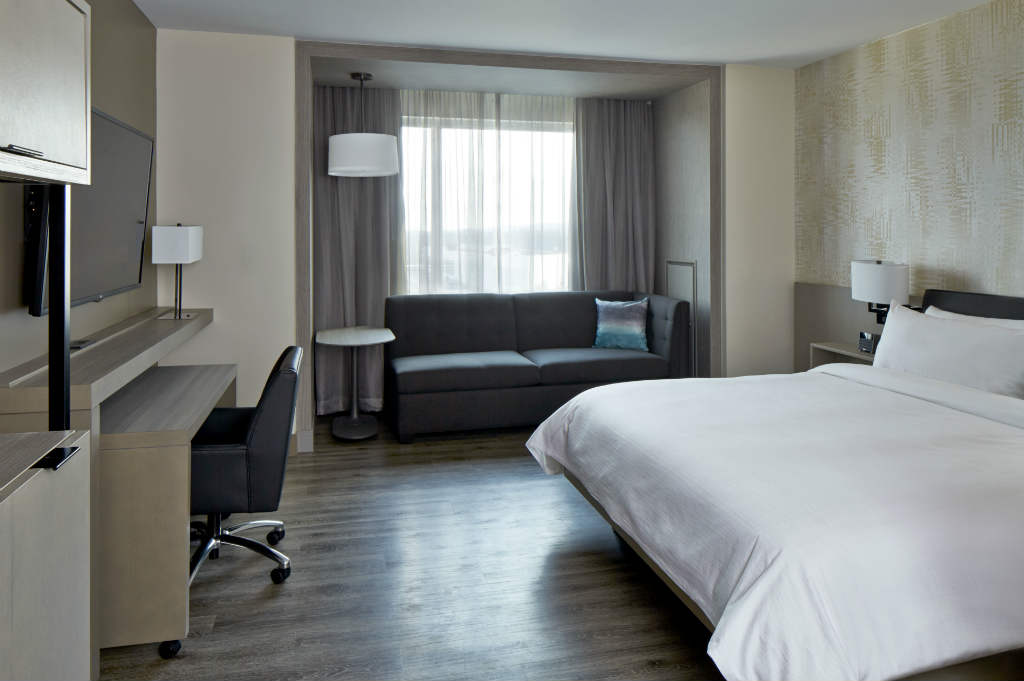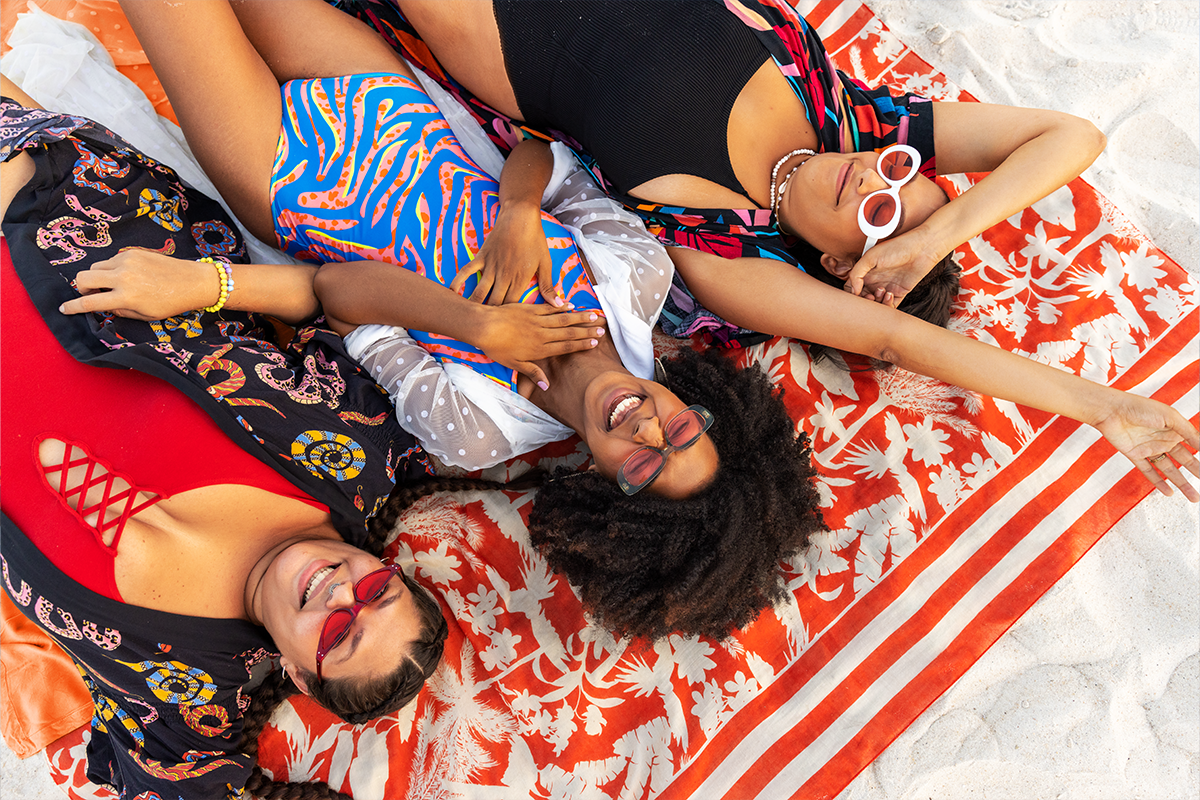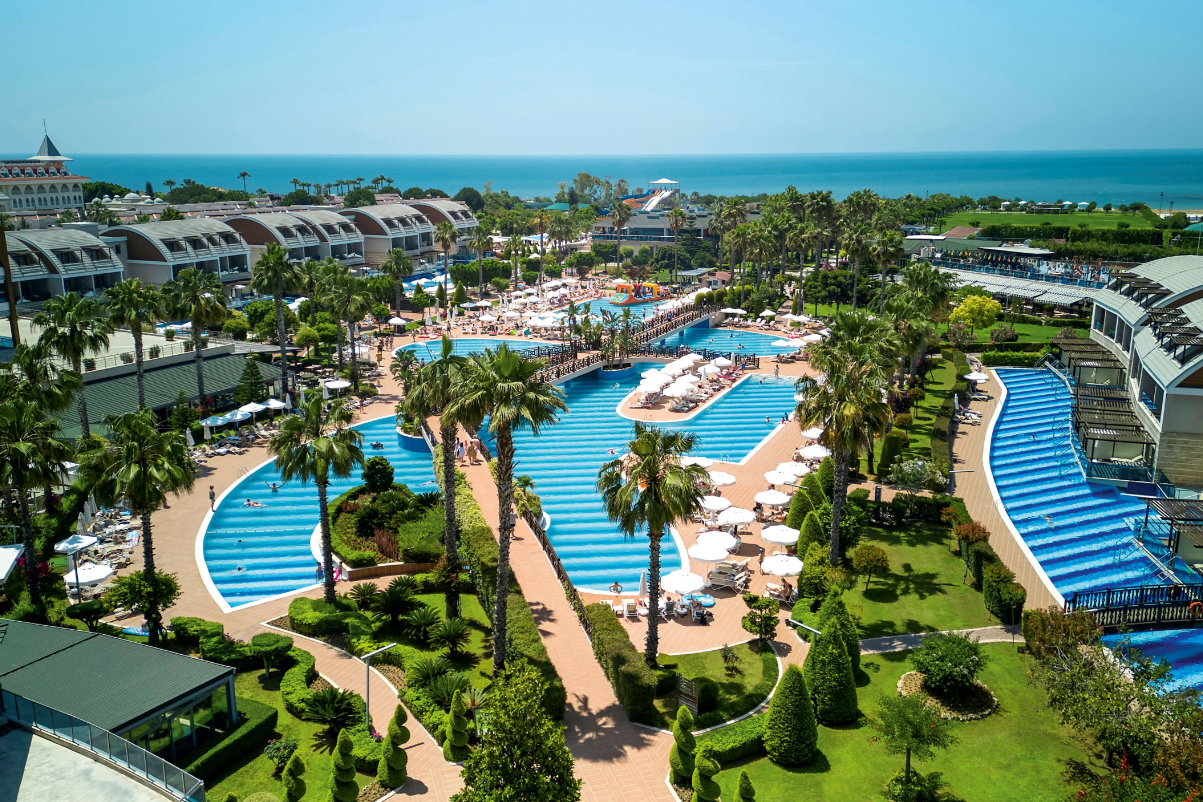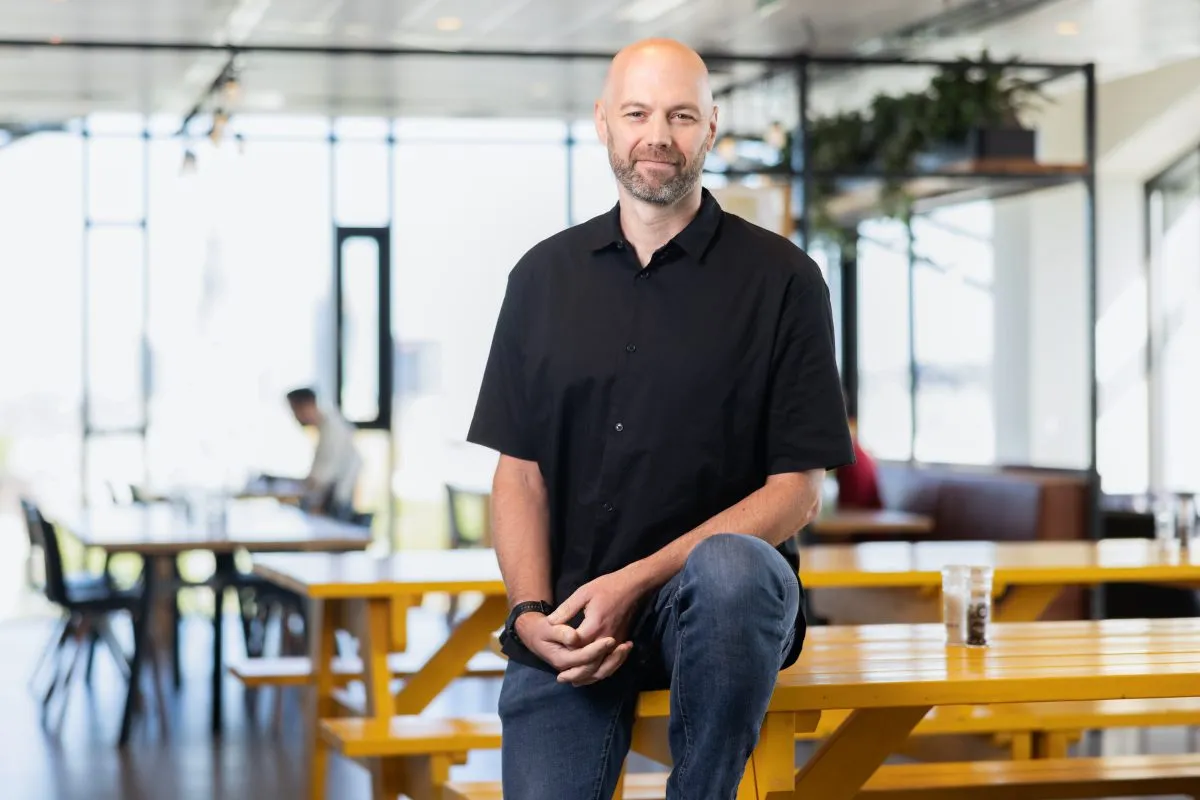Hotels Tried To Eliminate the Traditional In-Room Desk But Created a Backlash

Skift Take
Marriott and Holiday Inn Express experimented with removing the traditional desk inside guest rooms and the moves triggered a backlash.
Lots of guests, it turns out, still want a desk. It's an important piece of furniture in the opinion of lots of their customers.
Marriott's new "work surface" was geared to forge a connection with the millennial market but the brand found out the change caused a generational rift within the ranks of its guests.
Yahoo! Sports National Columnist Dan Wetzel wrote a scathing Tumblr post about the absence of a traditional desk at the City Center Marriott in Charlotte, North Carolina, saying there was a “little table with no corresponding chair.” Wetzel’s shock led him to find an entire Internet community indignant about Marriott robbing them of their beloved piece of furniture.
"The Idiots Who Designed Marriott's Hotel Rooms" is a forum on FlyerTalk, a website that hosts discussions on travel topics. The thread, which is 23 pages long, is inundated with users posting more grievances than approvals about "tiny ledges" that had to pass for desks, among other complaints. (It should be noted that there were users who are satisfied with the new work spaces too.)
"It was a bad decision by Marriott on the design. Especially the lack of a desk. Seriously? What do they think us road warriors are gonna do, hang from the ceiling? Sounds like they're going to fix it, but unfortunately you may have to find another hotel to frequent until they do," one user, flyerfmaz, posted in May 2014.
To be clear, Marriott is not removing desks from hotel rooms, says Matthew Carroll, vice president of the Marriott brand.
“What we are doing is we're trying to evolve how those work surfaces are implemented in the guest room,” Carroll says. “It's not about eliminating desks. It's about how you evolve, how that work surface gets implemented. How do you respond to that guest who is much more untethered, much more movable?”
Part of the Marriott Brand Transformation
Marriott is currently undergoing what Carroll describes as an “extensive brand transformation” to deliver on modern consumer expectations and experiences, and the guest room is a crucial lynchpin of that process.
As part of its transformation, the company conducted a variety of research efforts across generations, Carroll says, noting that its specific target customer is primarily the business traveler. The research included a full mockup room where consumers could walk through the model room to see the look, feel and functionality of it.
Marriott gleaned information suggesting that customer behavior in the room is much more “untethered,” thanks to things like Wi-Fi and mobile devices.
“You don't have to connect [to the Internet] through a blue cord anymore,” Carroll says. “How guests work and play and relax in the room is very different. That's one of the things that we're really responding to, is being able to enable our guests to be able to use the room in a way that responds to those different needs.”
Various Designs
As such, the new work surfaces are becoming more versatile, and in some cases they allow guests to move freely to different places throughout the room to work where they please.
To date, there are 10 to 15 of the new room designs being implemented in various ways at Marriott properties.
“There's a variety of how that work surface has been executed in each room,” Carroll says.
For example, in Wetzel’s room in the Charlotte property, Carroll says he “thinks there was a work surface in that room or a table to be able to provide that work surface.”
In determining the size and types of work spaces in each particular room, the Marriott team builds its design against a formula that considers the appropriate amount of horizontal space available that is conducive for two to three hours' work, Carroll says.
Much of the backlash against Marriott’s decision to move away from traditional desk to more modern work spaces was that the initiative was too millennial-focused.
There were some cases in which Marriott bowed to complaints, specifically at its Bethesda property, located near the company's headquarters, Carroll says.
"It was not something that was delivering against what guests at that hotel wanted so we actually did get back in there and rethink that work surface, and put in probably what you'd consider more of a traditional work surface and setup in that room," Carroll adds.
Ron Vlasic, regional vice president at InterContinental's Kimpton brand, applauds Marriott’s initiative to transform the traditional work surface, saying that it forces Marriott to rethink the entire guest room experience.
“I think that's cool that they are taking the initiative of removing that piece of furniture from their guest rooms,” Vlasic says. You know, very rarely do people actually sit at those desks and do their work. They are either in a nice chair or they are in their bed with their laptop. They're all about being comfortable, so that it sort of stirs the creativity of what they're working on.”
Holiday Inn Express Guests Like Desks
Holiday Inn Express has also introduced more streamlined rooms, part of its “Formula Blue” design concept, which launched last year and is currently in place at 19 properties. As part of that concept, the decision on whether to move away from the traditional desk came into play, says Jennifer Gribble, vice president, Americas, at Holiday Inn Express.
Holiday Inn Express' research consisted of two model rooms -- one with a desk, and one without. As guests walked through the rooms the experiment revealed that there was a lot of dissatisfaction with the room that didn't have the desk.
Peter Yesawich, co-founder, MMGY Global, says Marriott is redefining its brand to stay relevant, and he argues that a radical repositioning isn't necessary.
“They’re certainly keeping [core brands] polished, they're keeping them contemporary, and they're putting in new technology,” Yesawich says.
However, refreshing a brand must be done carefully and appropriately because getting it wrong can be risky, he says.




